Photo Credit: Gage Skidmore
This spring, Donald Trump added a new phrase to the stock of improvised riffs he throws out at his rallies: “I love my protesters.” And if my Twitter mentions are any indication, there are a lot of people who think they know why: disruptions inside or outside Trump’s events just might help elect him president.
Wrote one, a conservative: #Dems need to read @rickperlstein’s #Nixonland (#Liberalism gone amok led to riots, causing #conservative backlash.)” Liberals agree. “Rioting only makes Trump stronger,” wrote Esquire’s Charlie Pierce, linking to a clip of police responding to window-smashing and poster-burning at a Trump event in Albuquerque.
The syllogism is simple: first in 1966 with Ronald Reagan, then in 1968 and 1972 with Richard Nixon, Republicans ascended to higher office by pinning on the Democrats responsibility for riots and disruptive protests carried out on the left, successfully framing themselves (as I detailed in my 2008 book Nixonland) as the preservers of order and decorum in a society that seemed to be falling into chaos.
“Things are going to hell.”
“We need an ass-kicker in the White House.”
And presto, a generation of Republican presidents. Just read Rick Perlstein!
Well, I love my readers, conservative and liberal both. But the people using my historical work to make this particular argument need to read it less selectively and more attentively.
Trump is a fascist. Trumpism leads to riots. Already, the backlash in ensuing.
The first presidential candidate I wrote about who successfully exploited the anxieties of American voters about violence was Lyndon B. Johnson. When Theodore H. White wrote The Making of the President 1964, he included a long account of what happened in Birmingham in 1963. “Bombingham” was the nation’s epicenter of anti-black violence, where African-Americans led by Martin Luther King marched for integration and were set upon by police fire hoses and dogs while the whole world watched on TV.
His book began with the trauma of Kennedy’s assassination and continued with violent chaos throughout, because 1964 was a violent year. Some of it came from the right: the Klan bombing of the 16th Street Baptist Church in the fall of 1963 and the Klan murder of three civil rights workers in Mississippi in 1964; ruffianism at such political meetings as the Young Republicans Convention of 1963; all sorts of mayhem associated with the John Birch Society and its ideological cognates, like the time a Dallas matron clomped U.N. Ambassador Adlai Stevenson on the head with a protest sign.
And some of it came from the left—at least if you accept the political semiotics of the time that held black militancy responsible for the first summer of urban race riots of the 1960s, which began in Harlem directly following the Republican National Convention in 1964.
As for the most profound incident of political violence in the U.S. since the Civil War, the Kennedy assassination, the perpetrator was a Communist, but until that fact was established, the almost universal presumption was that right-wingers—Klansmen, H.L. Hunt, Birchers, whatever—must have been responsible; because at that time it was right-wingers whom most Americans held responsible for all signs of political chaos. Barry Goldwater was held to be a symbol of those strange, scary forces (even those riots by black people).
The Johnson campaign worked brilliantly and indefatigably to exacerbate that public perception. LBJ prevailed, in an electoral landslide. #Conservatism gone amok led to riots, the electorate reasoned. Rioting only made LBJ stronger.
Then, of course, 1966: Ronald Reagan, excoriating “the mess at Berkeley” and its “orgies so vile I can’t even describe them to you,” drafting off the white backlash following the Watts riots and winning the California governorship. Then 1968, when Nixon borrowed Reagan’s script: “As we look at America, we see cities enveloped in smoke and flame. We hear sirens in the night,” Nixon cried melodramatically in his speech accepting the nomination. “We see Americans hating each other; fighting each other, killing each other at home. And as we see and hear these things, millions of Americans cry out in anguish. Did we come all this way for this? Did American boys die in Normandy, and Korea, and in Valley Forge for this?” He pledged a “new attorney general” who understood that “the first right of every American is to be free from domestic violence.”
He won, of course. Then, in 1972, he staged himself once more as the man who could finally end the climate of violence in the nation—as if he hadn’t already been president for the past four years. And achieved the greatest landslide in U.S. history.
But there was another election in between. Nixon put enormous stock in the 1970 off-year congressional elections. (Another Watergate discovery was that Nixon organized a secret illegal slush fund for his favored candidates.) Nixon, and especially his attack dog Vice President Spiro Agnew, in the wake of a series of burnings of campus buildings across the country, hit the road to make the case that the country was on the verge of a violent left-wing putsch and that voting Republican was the only way to stave it off.
The Republicans broadcasted an election-eve speech from a Phoenix airplane hangar, a Trump-like affair in which the president sought to close the sale by speaking about a recent rally of his in San Jose, California (the same city, coincidentally, where two weeks ago Trump fans were pummeled by anti-Trump protesters). In San Jose, the presidential motorcade had been showered with protesters’ rocks. “For too long, we have appeased aggression here at home, and, as with all appeasement, the result has been more aggression and more violence!” Nixon, sounding much like Trump, said in Phoenix. “The time has come to draw the line. The time has come for the great silent majority of Americans of all ages, of every political persuasion, to stand up and be counted against appeasement of the rock throwers and the obscenity shouters in America.”
In fact, Nixon’s advance men had carefully arranged for the motorcade in San Jose to pass by those angry protesters, all but staging the incident. #Liberalism gone amok led to riots, causing #conservative backlash: Nixon was betting on it.
But the Democrats broadcast their own election-night speech. In it, Senator Edmund Muskie sat calmly in an armchair in his Maine home and explained—softly—that the election came down to a decision between “the politics of fear and the politics of trust. One says: you are encircled by monstrous dangers. Give us power over your freedom so we may protect you. The other says: the world is a baffling and hazardous place, but it can be shaped to the will of men. In voting for the Democratic Party tomorrow, you cast your vote for trust, not just in leaders or policies, but trusting your fellow citizens, in the ancient tradition of this home for freedom and, most of all, for trust in yourself.”
The next day, America went to the polls, and overwhelmingly expanded the majority of the Democratic Party in both houses of Congress.
That’s the score: four elections, two where violence drove the electorate toward the Republicans, and two where violence drove the electorate toward the Democrats. And here is the heart of the pattern. Listen to what Richard Nixon said in that 1968 acceptance speech, after he invited Americans to listen to the sirens in the night, the angry voices, Americans hating each other, fighting each other, killing each other. Later in the speech, he invited them to listen to “another voice. It is the quiet voice in the tumult and the shouting.” That was the voice he promised to embody. He promised calm.
What made his promise credible were the images, three weeks later, at the Democratic convention: the worst violence at any convention in U.S. history. And the way that same chaos seemed to follow the Democratic nominee wherever he went—like the incident on October 31 when a rally for nominee Hubert Humphrey was interrupted by a naked woman who dashed down the aisle carrying the head of a pig on a charger. After she was apprehended, her male companion, also naked, seized the pig’s head, leapt to the stage, and presented it to the speaker, economist John Kenneth Galbraith.
Chaos seemed to follow the Democrats wherever they went. So Nixon, promising quiet, prevailed.
Then, two years later, when chaos seemed to follow the Republicans wherever they went—it was a Democrat, Edmund Muskie, who offered the credible appeal, quoted above, for quiet.
History, really, is not so neat as all this. Still and all, the evidence is suggestive. It’s not that the chaos of political rallies that devolve into mêlées invariably favors the authoritarian party of law and order. Instead, it is the party to whom chaos appears to attach itself that the public tends to reject—especially if the leaders of the opposing party do an effective job of framing themselves as the quiet, calm, and centering alternative.
That is the lesson for Hillary Clinton. What is the lesson for us? It’s most decidedly not to encourage chaos at Donald Trump rallies. This very act of encouragement, after all, clouds the story: it would make it credible to frame the Democrats as authors of chaos.
Trump is a fascist. Trumpism leads to riots. Already, the backlash in ensuing: in the first round of polling since both parties provisionally settled on their candidates, 70 percent of Americans said they viewed Trump unfavorably, 56 percent “strongly” unfavorably. Among independents he lags 38 points behind Hillary Clinton in favorability, 20 points behind among whites; and even among Republicans his favorability rating has plunged from 42 percent in April to 34 percent now. Asked to choose between the three candidates on the ballot, Clinton, Trump, and Libertarian Gary Johnson, polling has Trump 12 points behind. He is the pig on the platter. Let him stew in his own blood. The public recognizes the chaos of which he is author, and they are turning away in disgust.
Rick Perlstein is the Washington Spectator’s national correspondent.

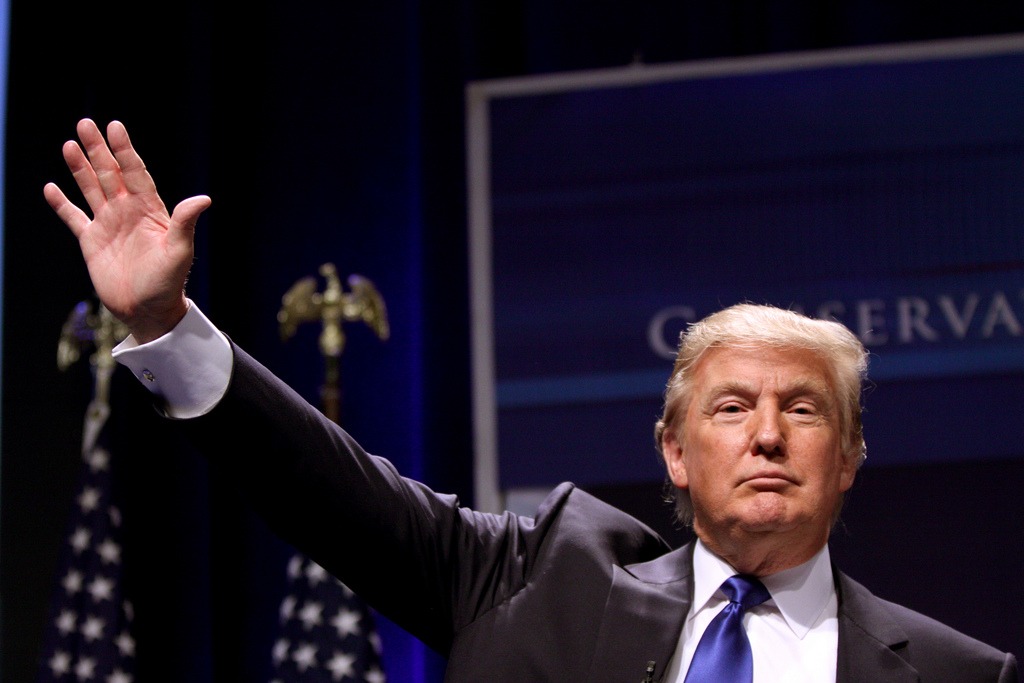
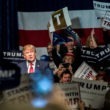
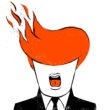
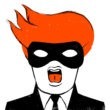
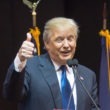

“As for the most profound incident of political violence in the U.S. since the Civil War, the Kennedy assassination, the perpetrator was a Communist, but until that fact was established, the almost universal presumption was that right-wingers—Klansmen, H.L. Hunt, Birchers, whatever—must have been responsible; because at that time it was right-wingers whom most Americans held responsible for all signs of political chaos.”
Seriously, Rick? You still believe in the Warren Commission? Oswald the alleged Communist worked for the FBI and CIA (those bastions of left-wing radicalism) and hung out with right-wingers.
I’m hoping Rick meant that a common perception was that the Kennedy ‘assassin’ was a ‘communist’. Otherwise, Rick risks undermining his otherwise vital historiographies of the nascent and now burgeoning American right-wing fascist movement. I mean, what other logical and otherwise fallacies would Rick be assuming a priori?
I know it is not directly related to your article, but powerful reasons exist to believe the CIA was primarily responsible for the assassination of John Kennedy. “The Devil’s Chessboard: Allen Dulles, the CIA, and the Rise of America’s Secret Government” by David Talbot details this hypothesis and provides compelling evidence to believe it’s true.
Rick — please, the Dems LOST four Senate seats in 1970. I know; I’m so old I worked in a losing Dem Senate campaign that year. Democratic numbers in the Senate went from 58 to 54. (One of those was Harry Byrd who dumped the Dem label to run as in indy; James Buckley also ran and won as an indy.)
I’m agnostic on Trump protests — you can’t dam a flood and political passion is at flood stage. Trump is scary.